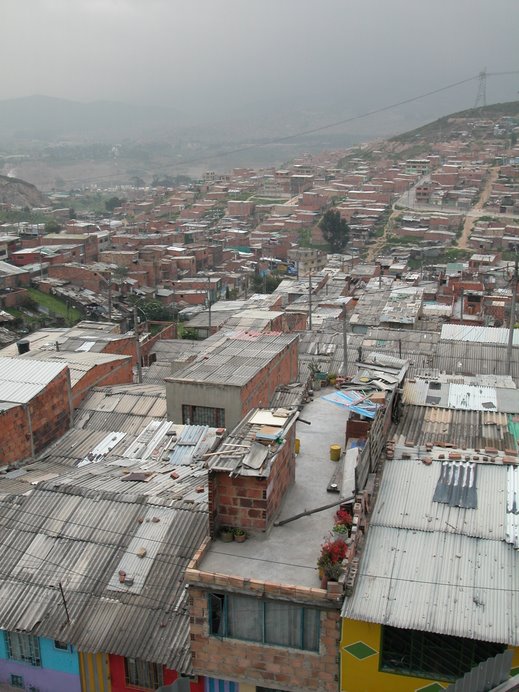 |
| 'Popeye,' one of Pablo Escobar's killers, shows off a tool of his trade. |
Years ago, working on a construction site in Texas, I met a tall Texan in his 50s who had just gotten out after ten years in prison. He was a good-natured man who I doubt would have stolen a wallet if he'd found it on a park bench. Rather, he'd gone to prison for killing a stranger.
 |
Homicides in Colombia by guns
(light blue) and knives (dark blue).
Altho knives are much more common,
guns kill many more people.
(Source: El Tiempo) |
He told me that he and his father had pulled into a gas station somewhere in Texas and started filling their tank. Unbeknowest to them, the rule was 'pay before you pump,' and another man was in the office paying for the gasoline that my acquaintance and his father were pumping.
The other man, believing that these two were stealing his few dollars worth of fuel, did what Texans do: He pulled out his gun and ran toward them. My acquaintance, seeing the stranger coming at him with pistol pointed, pulled out his own gun and shot the other man dead.
One man died and another did ten years in prison - at huge cost to society - because of a misunderstanding over a few gallons of gasoline. If they had not been armed, they would have argued briefly and resolved the situation with a handshake.
Those sorts of routine, deadly confrontations - even more than mass shootings like the recent ones in Texas and Las Vegas - are why Colombia is right to tighten its gun control laws.
 |
The correlation is clear: Number of guns and number of
gun massacres, the U.S. is in a class by itself.
(Source: New York Times) |
According to a recent study by the Fiscalia, reported by
El Tiempo, 7 out of 10 homicides in Colombia are committed by firearms.
"Firearms have a preponderant role in lethal violence in Colombia," the report said.
Bogotá can add one more fatality with the death this week of
Daniela, a university student shot in the head by a mugger on her way home in April. She lingered in a coma for seven months while her family and friends agonized. The killer has not been caught.
Firearms are smuggled illegaly into Colombia
from the United States, Central America and Europe. But others are purchased here legally, only to be used criminally. Of the almost 86,000 firearms seized by authorities between 2014 and '16, almost 20% had been purchased legally in Colombia but made their way to criminals.
What's more, the proportion of firearms confiscated from members of criminal organizations captured or killed has plummeted in recent years, from 94 guns for every 100 members of such organizations in 2010, to only 19 per hundred in 2015. That might mean that the organizations are getting better at hiding their guns, switching to other weapons, such as knives, or that corrupt police are confiscating but not reporting weapons in order to sell them on the black market - and back to criminals.
And that happens frequently. I once covered the crime beat for a small town newspaper in Mississippi. One of the most frequent items stolen in home burglaries were guns - perhaps legally purchased, but now in criminal hands.
As in the U.S., the large number of firearms in private hands in Colombia turns minor confrontations deadly. In the city of Cali, 42% of homicides result from such confrontations rather than contract killings. In Bogotá, the proportion is 21%, in Medellin, 14%, according to
El Tiempo.
To tighten up access to firearms, the Fiscalia offers the example of Japan, which has only a tiny number of gun homicides. There, in order to obtain a permit to own a gun, a person must pass a written test, a gun handling test and a psychological examination.
In Colombia, a person must, among other things, show the results of a psycho-physical evaluation and explain why he or she needs the weapon for protection from threats.
Related:
By Mike Ceaser, of
Bogotá Bike Tours
























